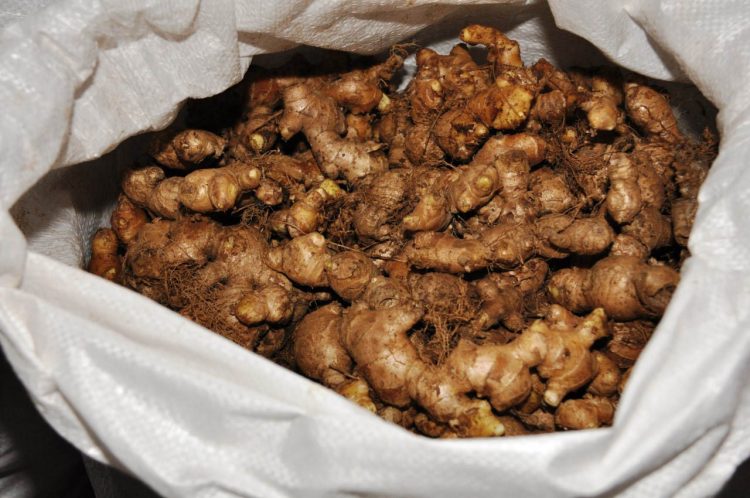Local interest in ginger may not be exactly marginal though the extent of its cultivation and use locally pales into insignificance when compared with other countries in Latin America, Asia and Africa, not least, China and India, the world’s two leading ginger exporters, and Nigeria, reportedly Africa’s biggest consumer.
Customarily, ginger’s popularity in Guyana has been mostly seasonal, with demand largely hinged to its role as the principal ingredient in Ginger Beer, a popular Guyanese beverage, associated with Christmas.
Beyond its central role in the ‘brewing’ of ginger beer, ginger is also commonly pressed into service for what are held to be its medicinal properties. Here in Guyana ginger is commonly used to suppress nausea, vomiting and menstrual cramps, and in a more substantive medicinal role as treatment for arthritis, diabetes and migraines.

Possessed of an agricultural sector that stands out in the Caribbean, it is, therefore, by no means surprising that Guyana is a significant regional producer of ginger. Neighbouring Suriname and also Antigua are among the countries in the region to which our ginger is exported in commercial quantities.
If ginger has not been one of the more talked-about local agricultural commodities it certainly caught both local and international attention since early this year, its significantly enhanced popularity coinciding with the advent of the COVID-19 pandemic.
At the global level, studies have explored the increased demand for ginger since the outbreak of the pandemic as means of helping to boost the immunity of the body against the COVID-19 virus. Such studies have also explored the impact of the COVID-19 pandemic on the global export of ginger. Here in the hemisphere, Peru, one of the bigger ginger growers, had exported around 18,000 tons up to the third quarter of 2020 compared to 23,000 tonnes for all of 2019. China, a global ginger-growing giant has, for much of 2020, had to reduce its exports in order to satisfy increased local demand. In fact, it was China’s cuts to its ginger exports during 2020 that opened the way for greater access to the global market by countries such as Peru, Indonesia, Germany, Spain, and Turkey.
The major rise in the popularity of ginger worldwide is attributed to the fact that consumers across the world appear to have bought into the ‘ideology’ that consuming this root crop, whether through eating or pulping it to liquid before consuming, boosts the immune system.
Back in April, following a flood of posts on social media touting ginger as a cure for coronavirus, Director for the World Health Organization (WHO) Health Emergencies Programme Dr. Michael Ryan, went on record as saying that while natural remedies such as ginger can have a positive impact on the state of people’s health, these, including ginger, are not medically proven treatments for combatting COVID-19.
Old habits, however, die hard, and here in Guyana the idea that ginger has healing properties – or at least ‘feel good’ ones – continues to influence the widespread consumption of ginger in various forms.
Christmas, as has already been mentioned, is the optimum time for the availability of ginger on the local market. It is also a ‘season’ during which farmers, from a number of regions across the country ‘cash in’ on increased ginger prices.
Two farmers who cultivate the crop have told Stabroek Business that some of the shortfalls arising out of reduced demand for other crops have been made up for by ginger growers on account of the significant increase in market demand for the commodity. “This year we didn’t have to wait for Christmas to get good prices for ginger,” a Region Four farmer told the Stabroek Business. From around March or April prices began to go up and they really haven’t gone down since then,” he said.
This newspaper also noted that early in 2020, local fruit and vegetable vendors began to add ginger to their display stalls. During the year, local supermarkets also displayed increased quantities of ginger and ginger powder, with one shop floor supervisor telling this newspaper that ginger had actually become “a better seller than some vegetables.”
While Guyanese have, through generations, embraced ginger as a remedy for flu-type and other ailments, Ryan takes a cautious approach to either embracing or rejecting those traditions. “I think we have to be careful with what we would consider to be the traditional remedies that people use for making themselves feel better,” Ryan said during a recent WHO press briefing in Geneva. … “Anything that makes one feel better, anything that provides that reassurance and anything that you believe can help your health that’s not dangerous certainly has a positive impact on your health,” but cautioned that it’s a different thing to say that something is effective in treating COVID-19.




